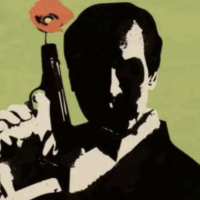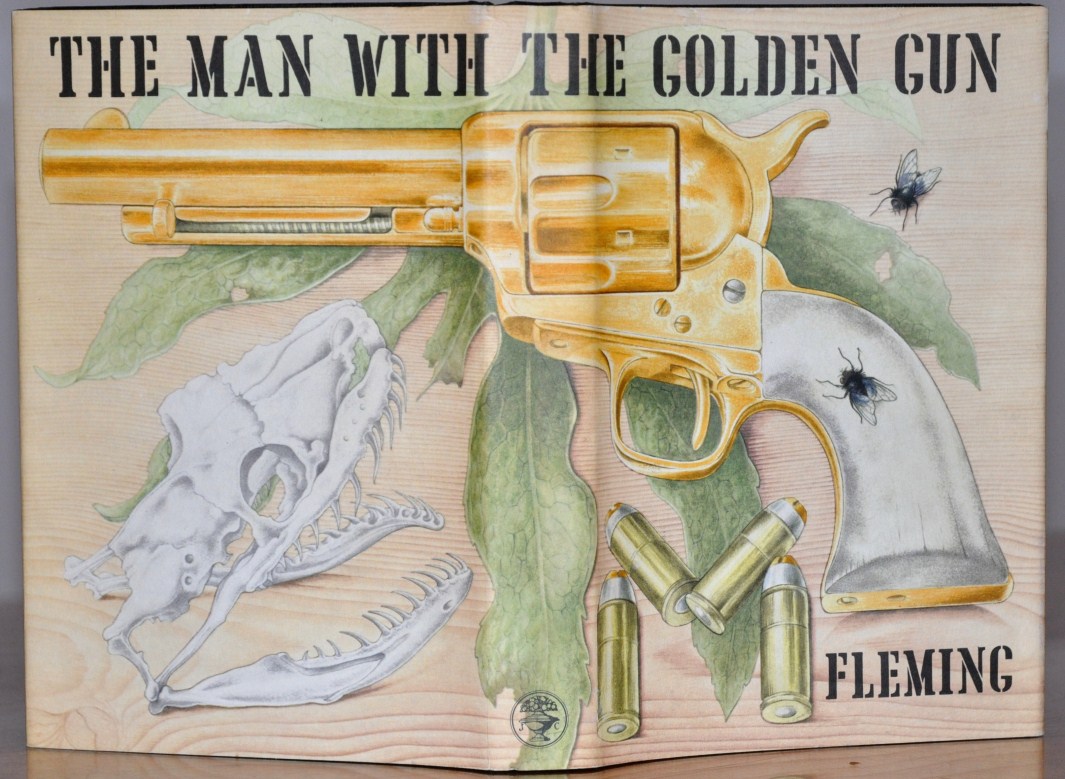What inspired Ian Fleming to write TMWTGG (1965) & create Scaramanga?
 Silhouette Man
The last refuge of a scoundrelPosts: 8,688MI6 Agent
Silhouette Man
The last refuge of a scoundrelPosts: 8,688MI6 Agent

Lately I've been thinking about what it was that inspired Ian Fleming to write what was to be his last James Bond novel, The Man with the Golden Gun, written in 1964 and published posthumously in 1965. We know it is one of Fleming's shortest novels (alongside The Spy Who Loved Me, 1962). It seems that this final Bond novel from Fleming seemed to be 10% inspiration and 90% perspiration more than ever before for the author but the (at least) skeleton inspiration for the story must have come from somewhere. I have one idea from the annals of True Crime that I think might have inspired the story about golden guns. I won't share it here just now as it's part of an upcoming blog article I'm writing about this. I may be completely wrong about this anyhow and deep down I suspect that I probably am, but the possibility of the idea intrigues me nonetheless.
Having read the relevant letters on The Man with the Golden Gun novel in Fergus Fleming's excellent book The Man With the Golden Typewriter: Ian Fleming's James Bond Letters (2015) I can confirm that there is sadly very little help there in what inspired the idea of the golden gun, Scaramanga and the plot to disturb the sugar industry in Jamaica on behalf of Fidel Castro's Cuba.
Of course Kingsley Amis was the first (and no doubt not the last) to point out the weaknesses of The Man with the Golden Gun from an inspiration and originality point of view. In his influential literary Bond study The James Bond Dossier (1965) Amis stated that he thought The Man with the Golden Gun was "very thin", seemingly being based on reworks of earlier Fleming Bond novels, those being the Hood's Congress in Goldfinger (1959) and the steam train action sequence first seen in Diamonds Are Forever (1956). One could certainly add to this by pointing to the Scaramanga dossier M reads at Blades was almost certainly an idea cribbed from Fleming's first Bond novel Casino Royale (1953) where there was a very similar dossier for the destruction of the villainous Le Chiffre. Besides this, Amis noted that Francisco Scaramanga and Mary Goodnight hardly qualified for their roles as as the Bond villain and Bond girl respectively.
Others have commented (on the Bond forums generally) that The Man with the Golden Gun represented a new and exciting departure for Fleming as Blofeld and SPECTRE had clearly been vanquished and Bond as a character seemed to be returning to an even keel again after the trauma of losing his wife of one day Tracy Bond, getting revenge on Blofeld and then being brainwashed by the Soviets to assassinate his chief M. Some say Fleming created a new type of independent and more self-employed villain with Scaramanga (albeit with links to Castro). In fact, Scaramanga is the first henchman type to be the main villain in a Bond novel since Horror and Sluggsy in The Spy Who Loved Me. There is also a return to a wider realism not seen since perhaps Casino Royale and Live and Let Die with a myriad of plots emanating from Scaramanga's employer - Castro's Cuba. The more stripped down plot of saving the free world's sugar industry is certainly a far cry from the more fantastical Fleming plots of the past - zeroing in a nuclear rocket on London in Moonraker (1955) or stealing two atomic bombs in Thunderball (1961)!
Obviously, as Fleming was ill and tired at the time of writing The Man with the Golden Gun he didn't get any chance to travel to new and exciting locations for what was to be his final literary work. Though the Panama Canal was apparently considered as a location for the novel (at least according to his friend Richard Hughes) Fleming instead returned to his old haunting ground of Jamaica and focused on the new elements of the culture of the Rastafarians, Jamaican brothels and the mangrove swamps. Fleming had already of course used his home from home, Jamaica, in the novels Live and Let Die, Dr. No and the short stories 'For Your Eyes Only' and 'Octopussy'.
These are just some ideas that come to my mind onThe Man with the Golden Gun. We also know from a letter to William Plomer that Fleming (who was quite literally dying at the time) said that the novel represented his last work as he had run out of both puff and zest and that he found the writing difficult and a lot slower than was usual. It's likely the published novel was Fleming's first draft edited as usual by William Plomer at Jonathan Cape.
Well, that's more than enough from me now. What do you think inspired Fleming's last Bond novel, The Man with the Golden Gun and his creation of the main villain Francisco Scaramanga? I'm all ears!
"The tough man of the world. The Secret Agent. The man who was only a silhouette." - Ian Fleming, Moonraker (1955).


Comments
Probably not much help, but the name Scaramanga came from an acquaintance (as was often the case with Fleming) and the title of course resembles "The Man With The Golden Arm", a novel* which had been filmed in the 50s. Anything else I could think of would simply be repeating Amis- thin characters, reworks- although there are some good moments (Bond showing off his gun skills to the assembled hoods for example).
*https://en.wikipedia.org/wiki/The_Man_with_the_Golden_Arm_(novel)
Another wild idea I have is the "Red Indians" theme that might have influenced Fleming, which found its way in DAF and similarly in TMWTGG, there's the use of a locomotive, a damsel in distress tied to the tracks, and of course, the gunslinger with a gold-plated revolver.
Nonetheless, as always I'm looking forward to your further research on this, SM.
http://www.avclub.com/article/ithe-man-with-the-golden-guni-by-ian-fleming-40390
http://www.michaelmayadventureblog.com/2015/03/the-man-with-golden-gun-by-ian-fleming.html
I have one theory on what might have inspired Ian Fleming to create Scaramanga for his last Bond novel, but it is only a theory. I don't want to spoil my upcoming article by revealing it here but it'd be nice to hear the thoughts of other literary Bond fans on this topic.
As I didn't get manage a thread revival the last time I posted here in November 2017 I'll try, try again in March 2018!
I'm very interested in this passage of your reply, superado. I've been meaning to reply to it in some proper detail for some time now, but better late than never as they say.
I especially like the part about Westerns featuring "the gunslinger with the gold-plated revolver." Now I've not read any Westerns (or seen very many Westerns on film either) so I'm wondering if golden guns were a trope of certain types of Western novels? I've not heard this before and I'd be delighted if you could go into more detail on this as I have a few theories on the origins of Scaramanga's golden gun and golden bullets that I will detail in an upcoming blog article I am writing on the literary version of Scaramanga in the TMWTGG novel.
Annie Oakley, the legendary sharpshooter and performer in Buffalo Bill's Wild West Show, also had gold-plated firearms (rifles and pistols).
The only western films I associate with the golden gun are the Italian productions THE MAN WITH THE GOLDEN PISTOL (a.k.a. DOC, HANDS OF STEEL) and RINGO AND HIS GOLDEN PISTOL, both of which were released shortly after the publication of TMWTGG.